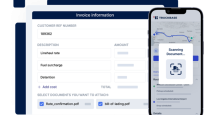Staff Reporter
How Software Helps Enable Industry Consolidation

[Stay on top of transportation news: Get TTNews in your inbox.]
The trucking industry has undergone further consolidation amid a surge of acquisitions, and software has enabled much of that.
“My perception is that there are more and more carriers that are taking the software available and being able to run a bigger and better truck line,” Lee A. Clair, a managing partner at Transportation and Logistics Advisors, told Transport Topics, “and with easy financing available are able to add a lot to the fleet and grow. And so, there are a lot of roll-ups going on and a lot of opportunities for small truck lines to get to something bigger.”
Clair noted it comes down to the professionalization of carriers. This allows for the ability to run something bigger and run it well, such as improving back-office management in a cost-effective way. He noted the other side of it is more companies are understanding how to go about the financial end of growth, which is driving strategic moves. This has coincided with the availability of capital and financing in the current environment.

Clair
“There are companies that are bigger and know how to do this, and then you’re even seeing it down to the smaller end where it’s pretty clear if you put two companies together how to get rid of the back-office costs, how to internalize and have less brokerage for backhauls,” Clair said. “Just doing things to create value.”
John Anderson, an operating partner at Greenbriar Equity Group, noted it’s useful to think of software or systems in two ways. The first being software that helps carriers run their business such as transportation management systems as well as systems that help with the back office, accounting and recruiting. The other would be logistics and market-oriented software that helps manage the commercial part of the business such as getting loads, fulfilling loads, billing and price discovery.

Anderson
“You’ve had truck-operating software for many years, and that has gotten more sophisticated,” Anderson told TT. “There are new entrances, you’ve got [software-as-a-service]-type operations. You’ve got cloud operations. Those have come down in price for smaller carriers. I don’t think that affects the M&A market that much in terms of making it more likely.”
Anderson added having those systems doesn’t mean smaller carriers can now more easily get into mergers and acquisitions because the systems have been around for a while and everybody already has them.
“You couldn’t do M&A without it,” Anderson said. “But everybody has it anyway. So, it’s necessary but it’s not been a real contributor to the changes. I think the other type of software, what I would call the commercial and market-based software that leads to truck brokerage, that leads to optimization, that leads to price discovery and then you start getting into AI, that to me is where you’ve seen the most rapid increase in the past five years, and that is much more of an enabler for companies to consider M&A.”
Anderson doesn’t see software as a core driver of mergers and acquisitions in trucking but rather something that has helped enable the more important factors such as seeking scale economies, diversity of customers and more efficient capacity.

In this special 2021 Roundabout episode, host Mike Freeze looks back at how trucking not only worked to recover from the effects of the pandemic, but also improve through the darkest of times. Hear a snippet above, and get the full program by going to RoadSigns.TTNews.com.
“I think it’s more that companies can get into more sophisticated realms of the supply chain, logistics and real brokerage,” Anderson said. “So that’s where I see the effect. And so, I think peripherally that could affect the M&A market some; make it more likely. But I don’t believe that is one of the core driving forces that’s led to a lot of M&A activity.”
Anderson noted the flip side is how software can help in making a carrier more desirable to buyers. Meaning a carrier with properly integrated and run systems can be more valuable. But even with that, he noted, it still is not a main driver.
“Do buyers want to buy a company that doesn’t have good software?” Anderson said. “No, that clearly helps make a company more attractive, and the better the systems and the better the software and the better the usage in the company, the more value a company gets.
“But on the other hand, there are buyers who would look at a company that doesn’t have good software that is state of the art and think there’s a bargain for us.”
Anderson added those buyers likely would think they can get such carriers at a lower price and then add the better software and systems later.
“I’m always going to look at it from the buyer side,” Anderson said. “Do they have good systems? Are they integrated well across each other? Do they add value in pricing, flexibility and acquiring more business?”
Want more news? Listen to today's daily briefing below or go here for more info:




